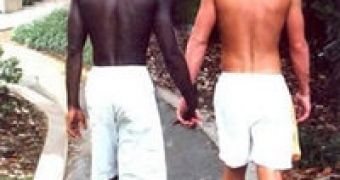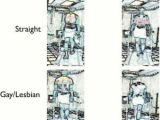A gay/lesbian is not completely successful in hiding his/her sexuality, as a new research has found that body motion and body type give subtle clues on sexual orientation of a person, which can be detected relatively easy by casual observers.
"We already know that men and women are built differently and walk differently from each other and that casual observers use this information as clues in making a range of social judgments. Now we've found that casual observers can use gait and body shape to judge whether a stranger is gay or straight with a small but perceptible amount of accuracy." said lead author Kerri Johnson, UCLA assistant professor of communication studies.
Johnson, with a team at New York University and Texas A&M made measurements of the the hips, waists and shoulders of 8 men and 8 women, half of whom were homosexual and half heterosexual.
The subjects were put to walk on a treadmill for two minutes while a 3D motion-capture system similar to those employed in the movies to create animated characters from living models assessed the precise level of shoulder swagger and hip sway in their gaits.
The measurements revealed that the homosexual subjects tended to display body types (hourglass shape for men, tubular bodies for women) and body motions (hip-swaying for men, shoulder-swaggering for women) not very typical for their gender. 112 undergraduate observers were put to watch videos of the backsides of the subjects while walking at various speeds on the treadmill. They could assess the subjects' sexual orientation with an overall level of accuracy much higher than chance, even if they could not see the subjects' faces or details of their clothing.
The team discovered that the casual observers found it easier to assess the orientation of males than females; they correctly assigned men's sexual orientation in over 60 % of the cases, but women's assignment did not overcome pure chance. Previous studies have revealed that casual observers can often detect with precision the sexual orientation based on scarce information. A 1999 Harvard research discovered that college students could assess the sexual orientation in 55 % of the cases just by looking at images of seated strangers.
"Studies like ours are raising questions about the value of the military's 'don't ask, don't tell' policy. If casual observers can determine sexual orientation with minimal information, then the value in concealing this information certainly appears questionable. Given that we all appear to be able to deduce this information to some degree with just a glance, more comprehensive policies may be required to protect gays against discrimination based on their sexual orientation." said Johnson.
It appears that sexual orientation is a "master status category", a trait that observers will notice and dictates all social interactions.
"Once you know a person's sexual orientation, the fact has consequences for all subsequent interactions, and our findings suggest that this category of information can be deduced from subtle clues in body movement," said Johnson.

 14 DAY TRIAL //
14 DAY TRIAL // 
